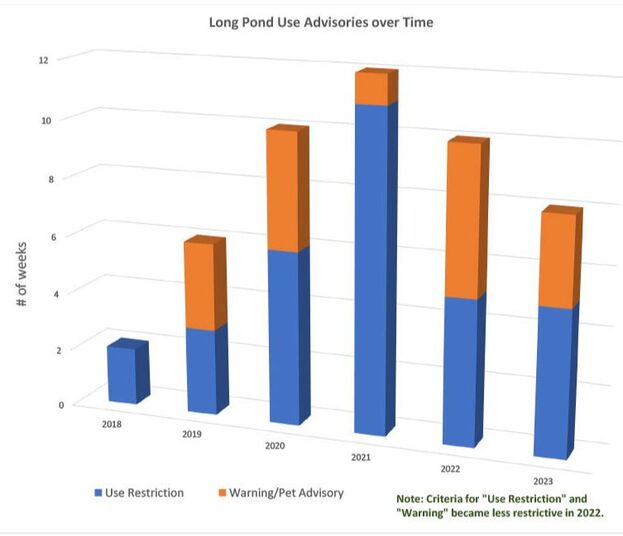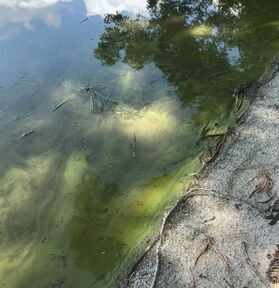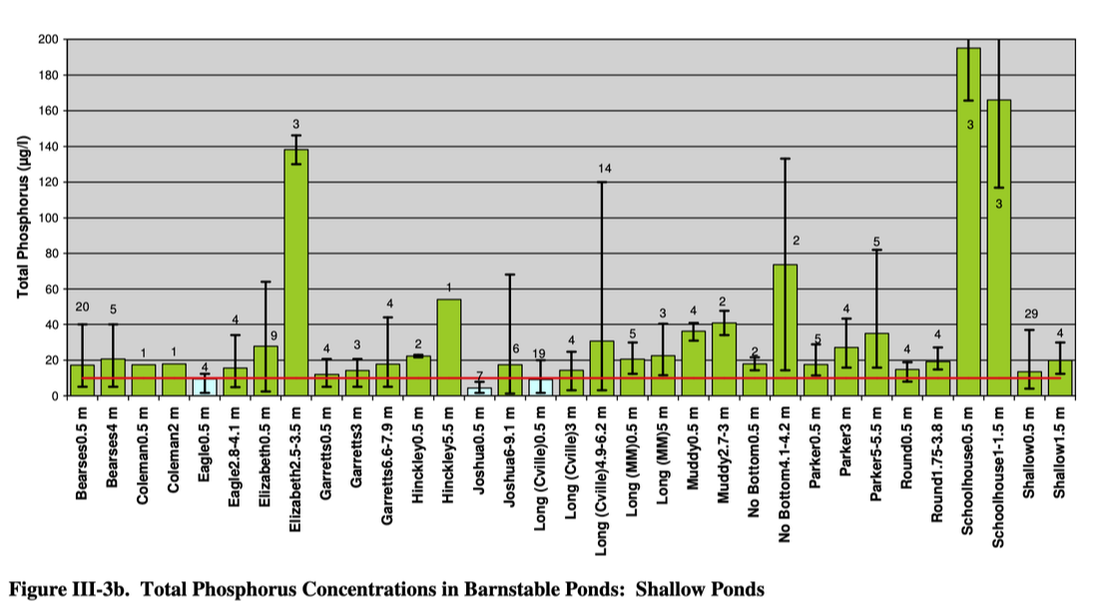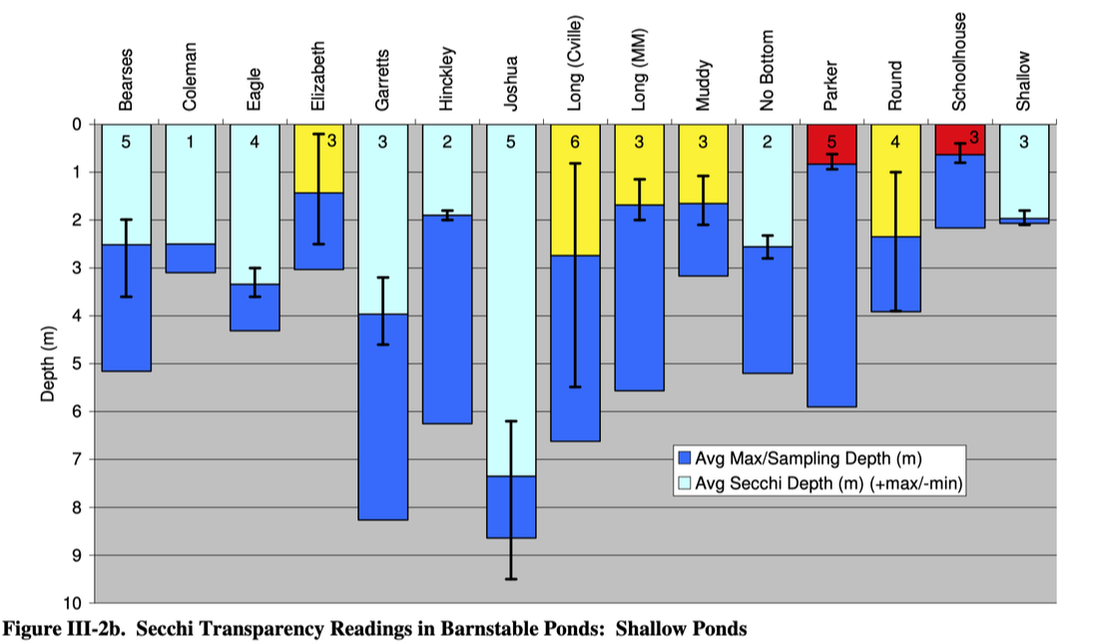Long Pond Monitoring Results
July 2024 APCC Test Results
The above chart is based on data from APCC's monitoring of Long Pond. While there is no threshold level of bloom-forming cyanobacteria that is considered "dangerous", levels around 1,000 micrograms often lead to a harmful algal bloom, which can pose a health hazard for 2 subsequent weeks.
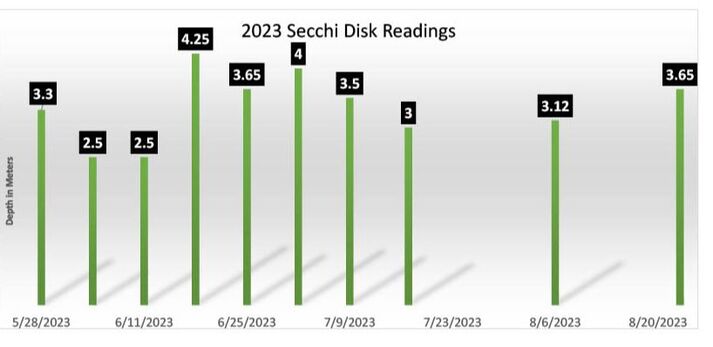
In 2023, FoLPMM began taking Secchi Disk readings, a measure of water clarity.
Water clarity has been fairly consistent throughout the summer, with the exception of early June when pollen clouded the water.
Numbers below reflect depth at which Secchi Disk "disappears".







